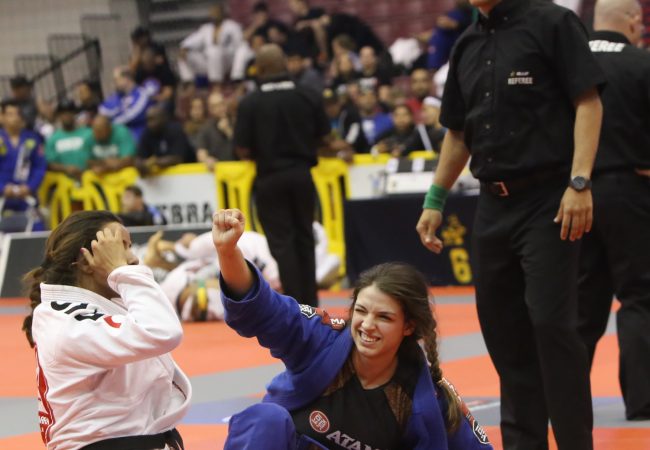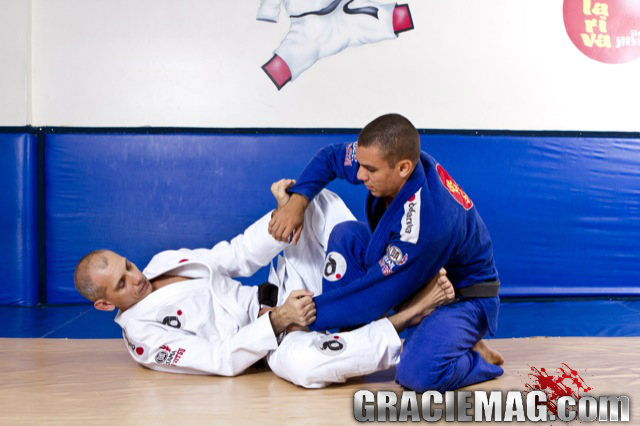
Raul Gazolla on bottom and feeling the pressure from having his head locked down in side control / Photo: Gabriel Menezes
Every Jiu-Jitsu practitioner, in training or competition, has heard shouts of, “Grab his head!” Grabbing the head when on attack and not letting your opponent grab yours is one of the lessons that arises on our pages the most, as GRACIEMAG readers know so well.
Why does this act of locking down an opponent’s head get so much emphasis from teachers, and why is it so dreaded by the one trying to defend?
With it’s head free as always, GRACIEMAG.com chased down a number of professors of Jiu-Jitsu and competitors to clear matters up once and for all.
HEAD LOCKED DOWN, HIP TRAPPED IN JIU-JITSU
“Basically, locking down the head allows you greater stability when on top in side control and half-guard. With your head wrapped up and trapped, the guy on bottom has a much harder time moving to try for the sweep or replace guard,” taught Vinicius Cruz, a Carlson Gracie black belt, adding:
“By grabbing the head and applying the always-useful shoulder pressure on your opponent, he’s trapped, unable to move his hip. He ends up with his face pointed outwards, his spine too, which means he can’t turn inwards nor shrimp his hips to replace guard. On the other hand, there are a number of guard-pass and side-control positions where you don’t need to grab the head.”
A gold medalist at the New York Open 2012, Daniel Beleza of SAS team says that grabbing the head also broadens your scope of attack:
“THE HEAD GUIDES THE BODY IN JIU-JITSU”
“In half-guard, having your head locked down means greater stability for the one on top, as well as a better chance of passing guard. With your head locked down you’re limited in your ability to perform counter-attack movements like sweeps and taking the back,” he explained. “In side control, when you’re chest to chest with your opponent, it’s the same principle. Once you have the head locked down, the one on top is much more stable and has more attack options, like mounting, knee-on-belly and finishes,” Daniel elaborated.
Now Juarez Soares da Costa, the leader of Araruama Jiu-Jitsu and the technical director at FJJ-Rio, sums things up tidily: “Your head is what guides your whole body in Jiu-Jitsu. If it’s locked down, can’t move, your opponent has control over your whole body.”
Check out the lesson from professor of Jiu-Jitsu Daniel Viana, where he shows how controlling the head and causing discomfort with the shoulder is useful for surmounting half-guard.
http://www.youtube.com/watch?v=GyOe7Si-I4o



